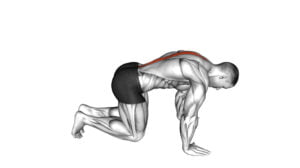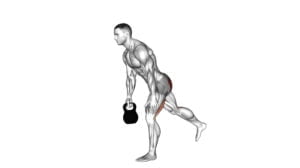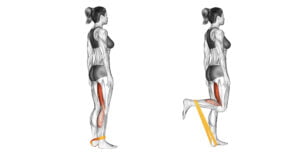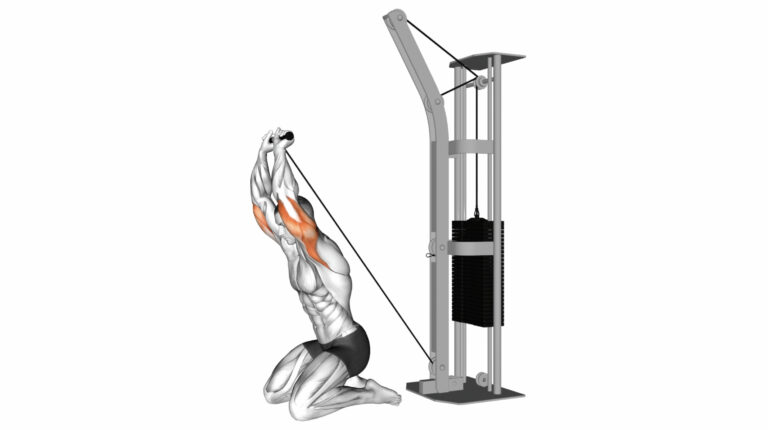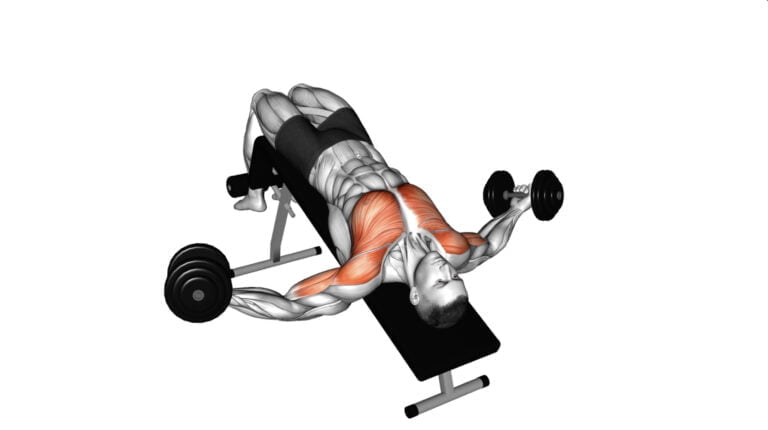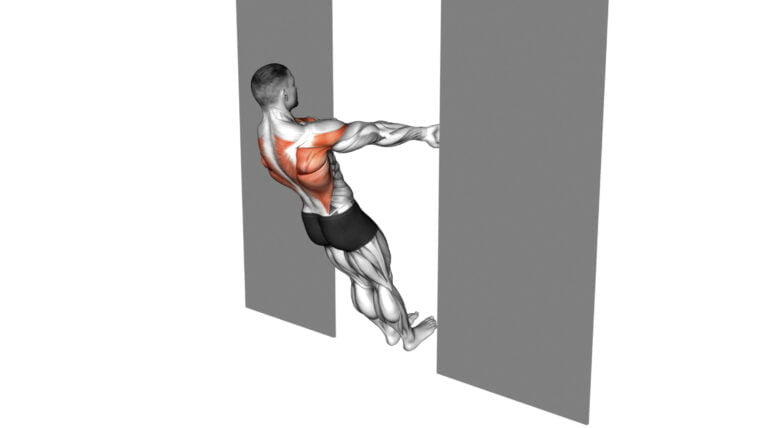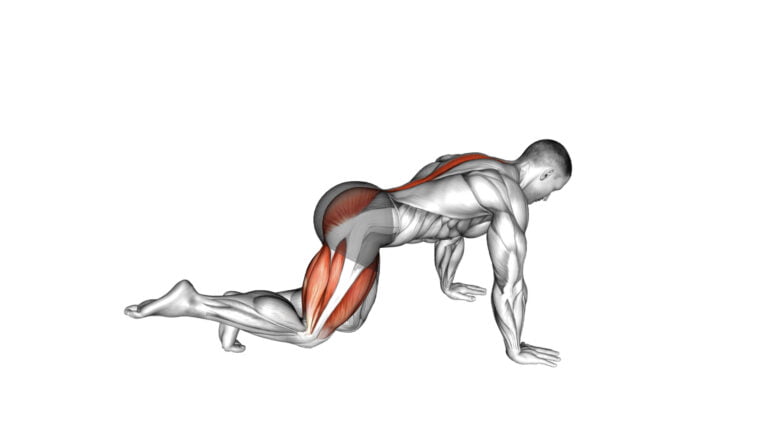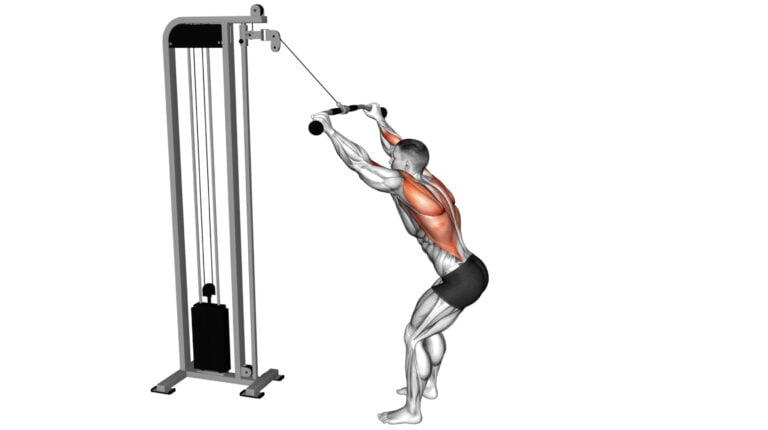Try These 5 Effective Hamstring Exercises With Cables Today!
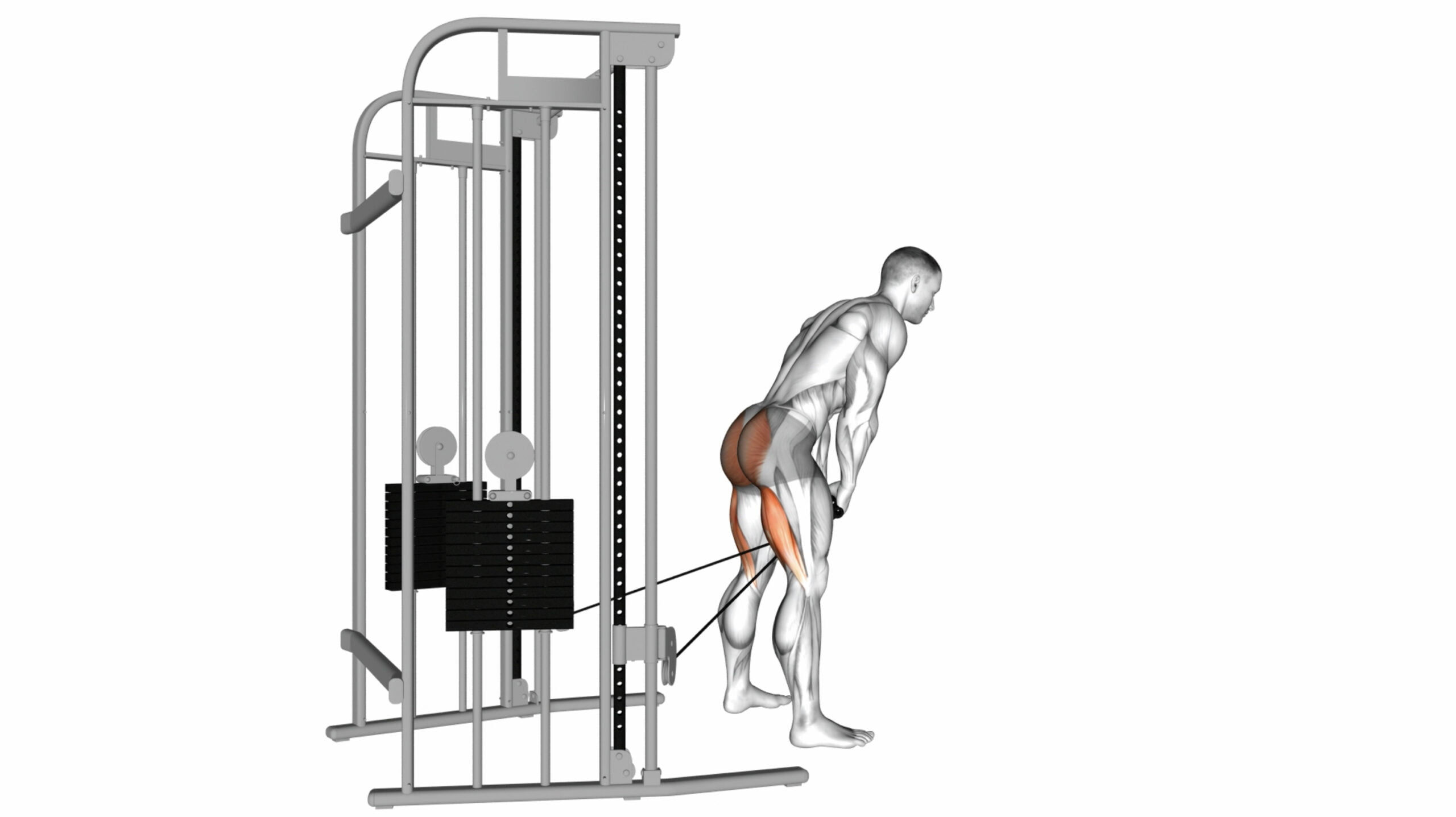
Strong hamstrings are the powerhouse for athletes and fitness enthusiasts alike, yet many neglect these crucial muscles in their lower body workouts. As a seasoned personal trainer with extensive knowledge of muscle mechanics, I’ve witnessed firsthand the transformational impact hamstring exercises with cables can have on one’s physical performance and overall leg strength.
By leveraging my experience in designing targeted workout routines, this blog post aims to demystify cable-based hamstring exercises and reveal how they can elevate your fitness regimen.
Cable machines offer a level of versatility free weights cannot match, enabling users to perform a range of dynamic movements that challenge the hamstrings in unique ways. Among them are five particular exercises renowned for building stronger, more resilient legs capable of supporting higher levels of athletic performance or daily activities.
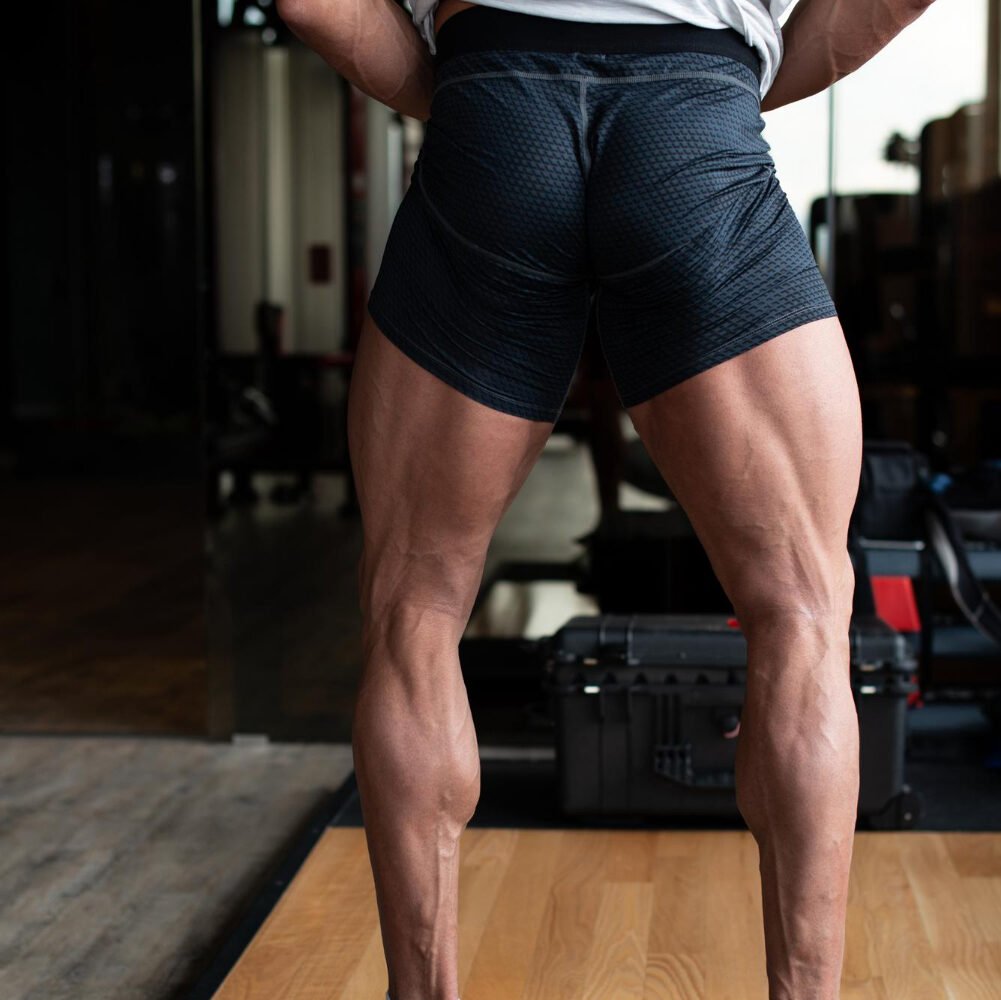
Unlocking the potential within your posterior chain starts with understanding these key movements—a journey we’ll embark on together here. Let’s dive deeper into making those hamstring gains!
Key Takeaways
- Cable hamstring exercises like the kneeling pull – through, standard and rope pull throughs, deadlifts, and donkey kickbacks target multiple lower body muscles for increased strength and stability.
- Keeping proper form during these workouts ensures effectiveness while preventing injury; controlled movements with gradual weight increases are key for safe progression.
- Including cable exercises in your regimen 2-3 times a week with an ideal rep range of 8-12 can enhance muscle endurance and prevent overuse injuries.
- Varying your exercise routine helps to combat muscle adaptation and supports continuous improvement in lower body function, balance, and athletic performance.
- Consistent training with cable exercises contributes to a well – rounded fitness plan that fortifies the hamstrings against strains or tears.
The Benefits of Cable Hamstring Exercises
Cable hamstring exercises with cables offer a range of benefits including lower body strengthening, improved balance and stability, and reduced risk of injury. By incorporating these exercises into your routine, you can target the hamstrings and glutes more effectively than traditional exercises.
Strengthening the lower body
Building lower body strength is essential for a well-rounded fitness regimen. Strong hamstrings, which include muscles like the biceps femoris, semitendinosus, and semimembranosus, are crucial for various activities from sprinting to squatting.
These muscles attach from below the knees at the fibular and tibial shafts all the way up to the ischial tuberosity of the pelvis. Targeting them through specific exercises can enhance your stability and power.
Engaging in cable hamstring workouts ensures you hit these key areas effectively. Exercises such as Romanian deadlifts target multiple muscle groups at once, turning them into compound movements that pump up your training efficiency.
To carve out stronger legs and glutes, adding isolation exercises ensures each part of your hamstrings gets attention. Every rep counts towards building a more formidable lower body setup that carries you through life with confidence and reduces potential injuries.

Improving balance and stability
Effective cable hamstring exercises do wonders for your balance and stability. They target essential muscles in your lower body, including the all-important hamstrings, as well as your glutes and core.
This dedicated focus helps build a foundation that keeps you steady on your feet whether you’re playing sports or just walking across an icy parking lot.
Imagine performing movements with fluidity and grace because your legs have become pillars of strength. Cable workouts offer increased resistance and a broad range of motion which leads to enhanced muscular control.
Engaging these muscles consistently leads to improved coordination and a physique ready to handle dynamic activities with ease. Embrace these exercises as they are not only about power; flexibility gets a boost too, making every step sure-footed and strong.
Reducing risk of injury
Building on improved balance and stability, focusing on cable hamstring exercises also plays a crucial role in keeping your body safe from harm. Strong hamstrings provide support to your knees and help maintain proper joint alignment, which is vital for reducing injury during physical activities like running or jumping.
Cable pull throughs and deadlift variations target the muscles around the femur’s medial and lateral condyles, improving their strength for more resilience against strain.
Incorporating variations such as using a rope with cable pull-throughs challenges different parts of your hamstrings and glutes, optimizing muscle development while safeguarding against repetitive stress injuries.
Consistent training with these compound exercises enhances flexibility in the hamstrings, leading to an increased range of motion that can prevent pulls or tears when you perform dynamic movements.
By strengthening these key areas and promoting overall muscular harmony, you’re equipping yourself with a formidable defense against common lower-body injuries powerlifters often face.
5 Effective Hamstring Exercises Using Cables
Get ready to strengthen your hamstring muscles with these 5 effective cable exercises. Whether you’re looking to improve lower body strength, enhance stability, or reduce the risk of injury, incorporating these exercises into your routine can help you achieve your fitness goals.
1. Cable Kneeling Pull Through
The Cable Kneeling Pull Through specifically targets the hamstring muscles, as well as the glutes and lower back. This exercise effectively engages these muscle groups, making it a valuable addition to any lower body workout routine.
By incorporating Cable Kneeling Pull Through into your regimen, you can enhance overall lower body strength and stability while actively engaging the hamstrings and glutes for improved muscular endurance.
The Cable Kneeling Pull Through is an efficient way to strengthen your hamstrings while also targeting other important muscle groups like the glutes and lower back. Incorporating this exercise into your workout routine can have a positive impact on your overall lower body strength and stability over time.
2. Cable pull through
The cable pull through is an effective exercise for strengthening the hamstrings and glutes. Begin by standing with feet shoulder-width apart, facing away from the cable machine. Grasp the rope attachment between your legs with both hands, and hinge at your hips while keeping a natural arch in your lower back.
Push your hips back as you bend forward, allowing the cable to move through your legs. Stand up straight by squeezing your glutes at the top of the movement. This exercise targets the posterior chain and enhances hip mobility.
By using cables for this exercise, you can maintain constant tension on the muscles throughout each repetition. Focus on engaging your hamstrings and glutes to drive the movement, ensuring proper form for maximum effectiveness and safety.
3. Cable Pull Through (with rope)
Transitioning from the traditional cable pull through, the Cable Pull Through (with rope) provides a unique variation to enhance lower body strength and stability. This exercise targets the hamstrings, glutes, and lower back muscles while incorporating a rope attachment for an added grip challenge.
Its movement pattern closely resembles that of a standard cable pull through but introduces benefits for hip mobility and overall lower body strength.
By integrating the Cable Pull Through (with rope) into your workout routine, you can effectively engage multiple muscle groups in your lower body, promoting enhanced functional strength and a reduced risk of injury.
4. Cable Deadlift
The Cable Deadlift engages the hamstrings and glutes, promoting lower body strength and stability. It also targets the core for added support and balance during the exercise. By incorporating Cable Deadlifts into your routine, you can effectively build stronger, more defined hamstrings while reducing the risk of injury.
This exercise allows for a full range of motion, activating both the flexor and extensor muscles in the legs to promote overall lower body flexibility. The controlled movement of lifting and lowering the weight enhances muscle control, making it an effective addition to any lower body strengthening regimen.
5. Cable Donkey Kickback
The cable donkey kickback engages the hamstrings, glutes, and lower back muscles. It bolsters strength and stability in the lower body. To execute this exercise, attach an ankle strap to a low cable machine, then kick your leg back while keeping the knee bent.
By maintaining proper form and controlling the movement throughout, you can maximize benefits and minimize injury risk. Adjusting the weight on the cable machine allows for variations in resistance levels when performing this effective hamstring exercise.
Tips for Performing Cable Hamstring Exercises
When performing hamstring exercises with cables, it’s important to keep proper form, control the weight, and vary the range of motion to effectively target the muscles. Gradually increasing the weight as your strength improves will also help you continue to see progress in your lower body strength.
Keep proper form
Maintain a straight back and engage your core throughout the exercise. Ensure a slight bend in your knees and hinge at your hips when performing cable hamstring exercises. Avoid excessive weight to prevent compromising form and potential injury while focusing on controlled movements without using momentum.
Position your feet correctly and pay attention to the cable attachment for proper alignment during these exercises. Use an appropriate weight that allows you to perform with proper technique, avoiding any compromise of form throughout each repetition.
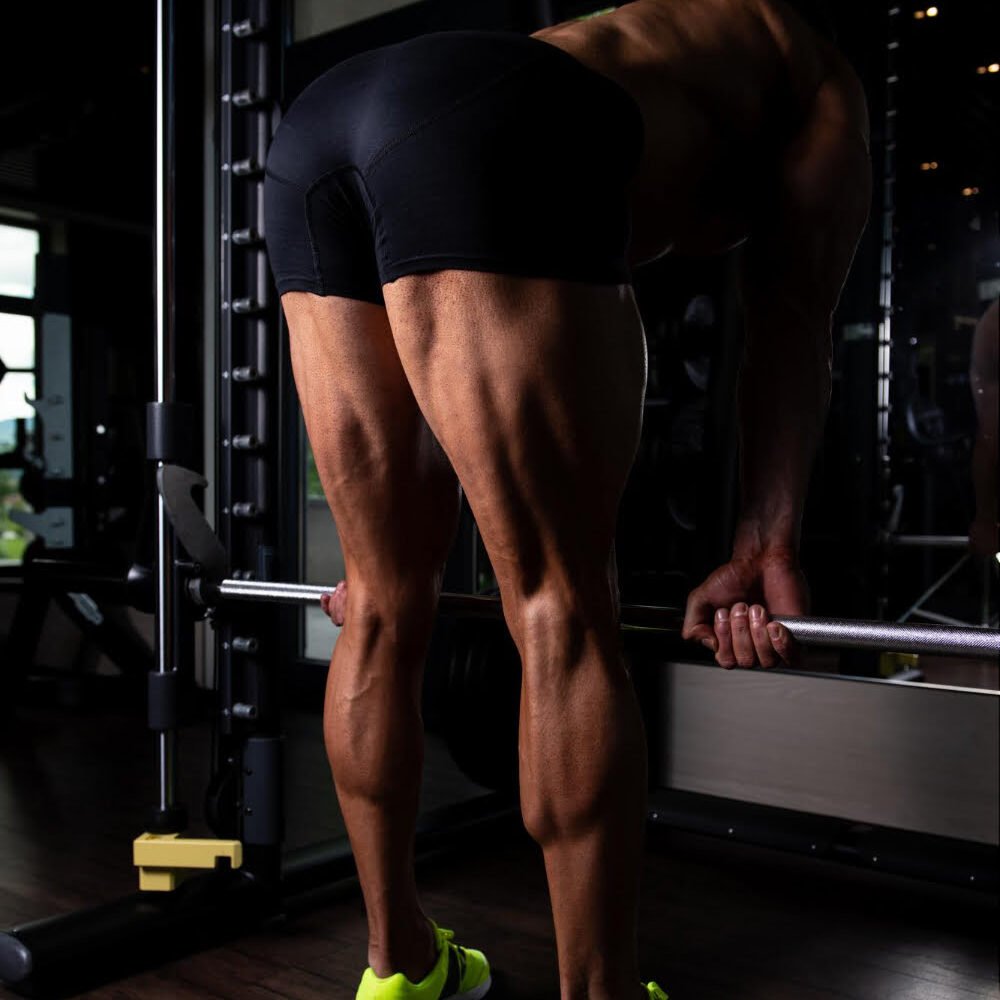
Control the weight
Control the weight during cable hamstring exercises to prevent strain and maximize muscle engagement. Gradually increasing the resistance challenges and strengthens the muscles over time, leading to improved endurance and performance.
Proper control of the weight also helps in maintaining form and reducing the risk of injury, ensuring an effective workout for your hamstrings.
As you engage in cable hamstring exercises, focus on controlling the weight used, enabling targeted activation of your hamstrings while minimizing stress on other muscles or joints.
Vary the range of motion
Varying the range of motion in cable hamstring exercises is crucial for targeting different areas of the hamstring muscles and enhancing overall strength and flexibility. By adjusting the length of each rep, you can engage various parts of your hamstrings, ensuring a comprehensive workout that promotes balanced development.
Full-range motion ensures all sections of your hamstrings are effectively targeted, reducing the risk of muscle imbalances.
Modifying the range in each exercise optimizes muscle activation throughout each movement, promoting a more thorough and complete engagement to enhance overall lower body strength and flexibility.
Increase weight gradually
Gradually increasing weight during cable hamstring exercises is crucial for building strength and avoiding injury. By slowly adding resistance, you challenge your muscles to adapt and grow stronger over time.
This approach also allows you to maintain proper form and technique as you progress, reducing the risk of strains or other injuries commonly associated with abrupt increases in weight.
Starting with lighter weights not only helps in mastering the correct movement patterns but also serves as a foundation for safely progressing to heavier loads.

Incorporating Cable Hamstring Exercises into Your Workout Routine
When it comes to incorporating cable hamstring exercises into your workout routine, it’s important to vary the exercises, perform them with proper form and control the weight. This will help you achieve optimal results and prevent injury.
Recommended frequency
Incorporating cable hamstring exercises into your workout routine 2-3 times per week is ideal for seeing progress and building strength in your lower body. By allowing enough rest between sessions, you can prevent overtraining and reduce the risk of potential injury, ensuring that your muscles have time to recover and grow stronger with each workout.
Consistent training at this frequency will help you achieve greater flexibility in your hamstrings while also strengthening and toning these crucial muscles. Incorporating these exercises regularly will contribute to improved lower body function, better athletic performance, and reduced risk of strain or injury during physical activities.
Ideal rep range
For effective results, aim for 8-12 reps per set when performing cable hamstring exercises. This rep range strikes a balance between building strength and muscle endurance in the hamstrings.
Additionally, consider incorporating higher rep ranges of 12-15 reps to further target and strengthen the hamstring muscles. Varying your rep ranges can provide a comprehensive workout that challenges different aspects of your hamstring muscles.
With an ideal rep range of 8-12 reps per set, you can effectively target and strengthen your hamstring muscles while also promoting muscle endurance. Higher rep ranges such as 12-15 reps can further enhance the effectiveness of cable hamstring exercises by focusing on specific areas within the muscles.
Importance of varying exercises
To ensure continued progress and improved muscle growth, it is vital to understand the importance of varying exercises. Incorporating a variety of cable hamstring exercises into your workout routine helps prevent muscle adaptation and plateauing by targeting different muscles within the hamstring group.
This approach not only fosters better overall development but also provides constant tension on the muscles throughout the entire range of motion, leading to improved muscle activation and growth.
Additionally, engaging in different cable hamstring exercises can enhance stability, balance, and reduce injury risk by strengthening supporting muscles that are often overlooked.
Conclusion

In conclusion, the 5 Effective Hamstring Exercises with Cables discussed are essential for building a stronger lower body. These exercises specifically target the hamstrings and can significantly improve balance and stability.
By incorporating these cable exercises into your workout routine, you can prevent plateaus, increase muscle definition, and enhance overall lower body strength. Have you considered varying your hamstring workouts using cables to keep your muscles challenged? Don’t forget to maintain proper form and gradually increase weight for effective results.
Adopting these practical strategies is sure to lead to noticeable improvements in strength and stability while reducing the risk of injury – a worthwhile investment in your fitness journey!
FAQs
1. Why focus on hamstring exercises with cables?
Targeting hamstrings muscles using cables helps improve flexibility and strength in your lower body, providing a solid foundation for overall fitness.
2. What does proper form look like during these exercises?
Proper form includes keeping your back straight, moving through a full range of motion from extension to flexion, and maintaining control as you curl the cable towards your calves—remember to breathe evenly throughout the exercise.
3. Can cable hamstring workouts help prevent injury?
Absolutely! Strengthening hamstrings can stabilize knees and reduce strain during activities, potentially lowering the risk of injury.
4. How often should I do cable hamstring exercises?
Consistency is key; aim to include these exercises in your routine 2-3 times per week for best results in building a stronger lower body.

Author
Years ago, the spark of my life’s passion ignited in my mind the moment I stepped into the local gym for the first time. The inaugural bead of perspiration, the initial endeavor, the very first surge of endorphins, and a sense of pride that washed over me post-workout marked the beginning of my deep-seated interest in strength sports, fitness, and sports nutrition. This very curiosity blossomed rapidly into a profound fascination, propelling me to earn a Master’s degree in Physical Education from the Academy of Physical Education in Krakow, followed by a Sports Manager diploma from the Jagiellonian University. My journey of growth led me to gain more specialized qualifications, such as being a certified personal trainer with a focus on sports dietetics, a lifeguard, and an instructor for wellness and corrective gymnastics. Theoretical knowledge paired seamlessly with practical experience, reinforcing my belief that the transformation of individuals under my guidance was also a reflection of my personal growth. This belief holds true even today. Each day, I strive to push the boundaries and explore new realms. These realms gently elevate me to greater heights. The unique combination of passion for my field and the continuous quest for growth fuels my drive to break new ground.





